DIGGING UP ST PETERS – Part 3
DIGGING UP ST PETERs 3
SATURDAY & SUNDAY January 28th and 29th
The threatened rains held off and the dig team on Saturday morning were hard at it clearing away as much topsoil and scattered bits and pieces they could scrape away.
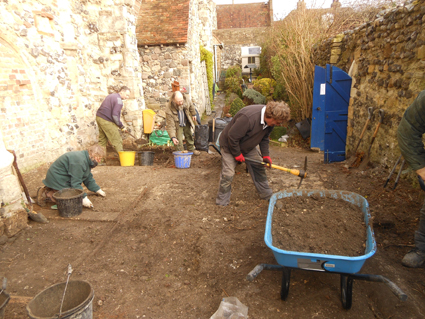
It transpired that the discovered vault extended to the full width of the South Aisle and required some more exploration.
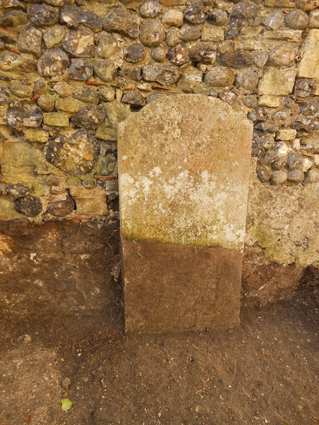
As the topsoil was removed some more serious digging could get underway.
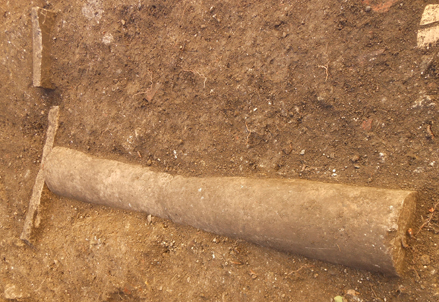
The dark area at the bottom indicates the amount of soil that has already been removed …..
….. exposing what was originally thought of as a column as actually a grave marker with the broken off tombstone at the head which would have contained the names and dates of the deceased. The names will never be known and are probably a part of the carved rubble being carefully preserved in the gardens.

After a hard morning of digging and scraping it was time for some lunch……
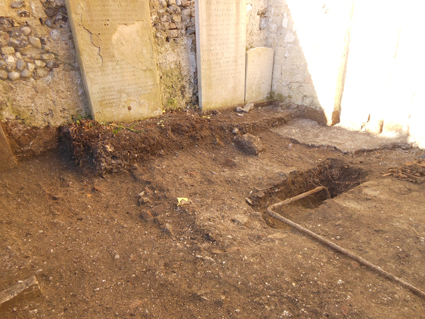
In the afternoon various 20th century plumbing and drain pipes presented themselves…..
one running straight through the vault whose entrance had been uncovered.
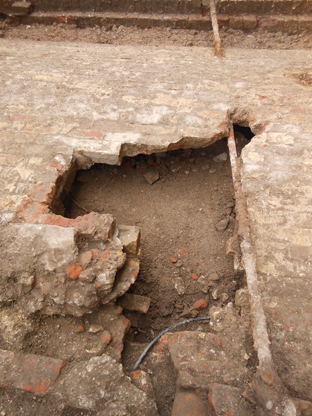
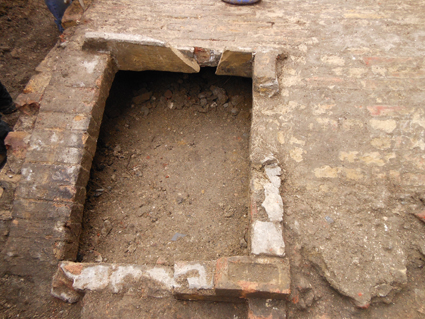
It is estimated that there are about 6 to 10 burials in this section of the South Aisle gardens which might interfere with the original plan to install toilets for the use of visitors to the church.
This is the reason for initiating the archaelogical dig which is a fact that I seem to have forgotten to point out earlier on.
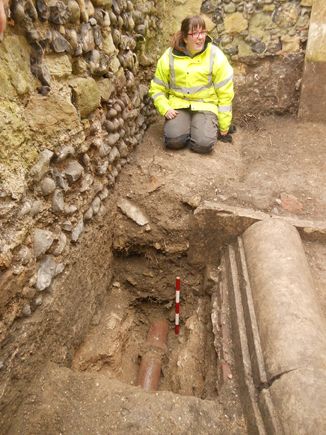
As the topsoil is removed it is carefully searched for interesting bits and pieces….
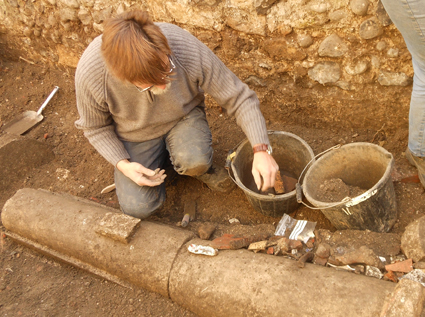
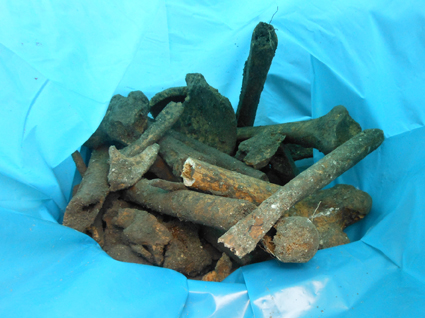
This is the official ‘BONE BAG’ where scattered human remains are kept. They will be carefully re-inturred, probably in the uncovered vault at the end of the dig.
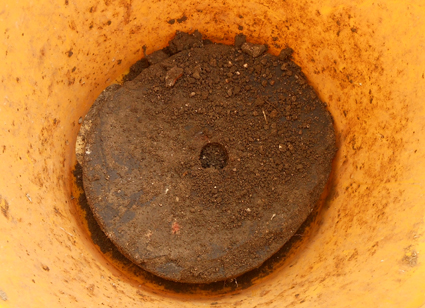
The round stone with the hole in the middle at the bottom of a bucket is an undetermined object.
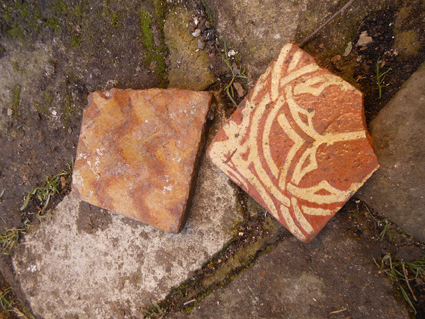
But what is a most exciting find are these two Norman floor tiles which appeared which gives hope that others will be located intact when the original floor is revealed.
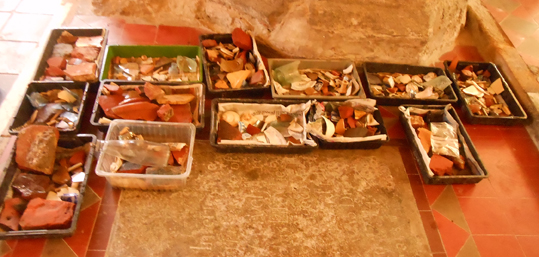
Inside the church, trays containing the washed remains of old bits of pottery and glassware including a 20th century milk bottle.
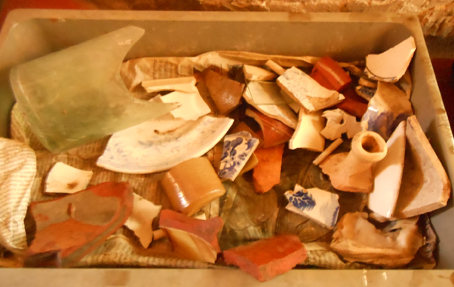
And of particular interest is the bowl of a 16th or 17th century clay pipe and what has tentatively been attributed as a 7th century shard of pottery which throws the dating of the site back a few hundred years or more.
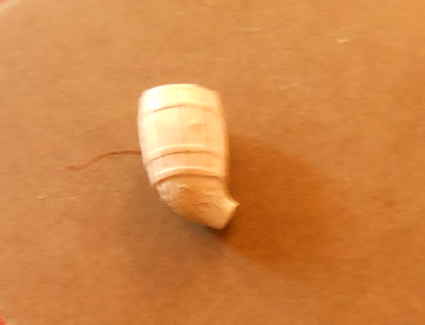
The plan for next weekend is to extend the trench where the original floor level has been reached over to the wall of the church to see what lies beneath.
It ain’t over yet!

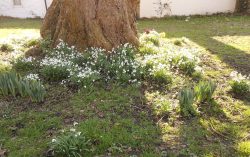 Next Post
Next Post
